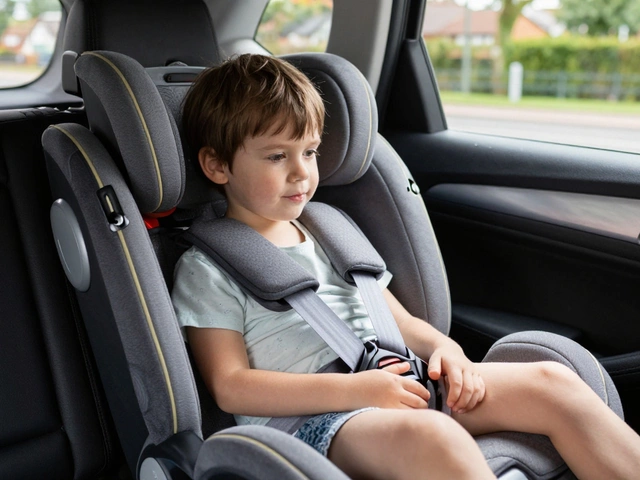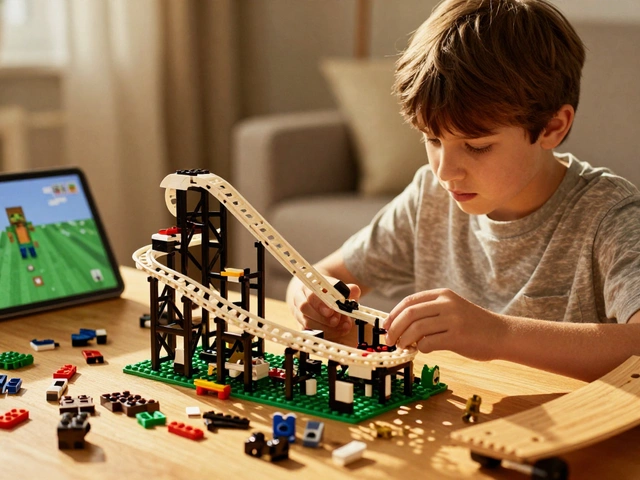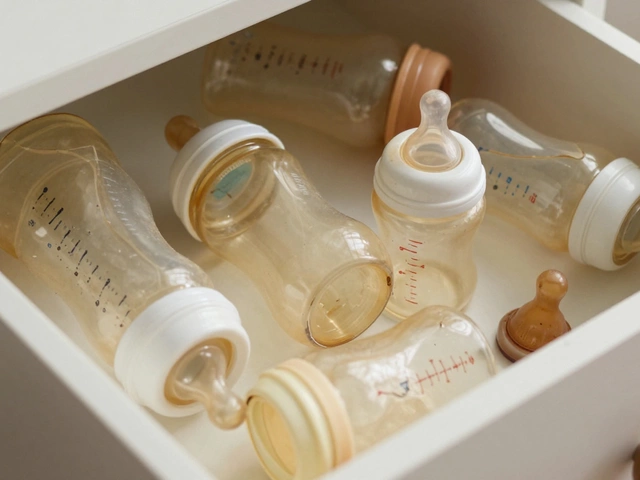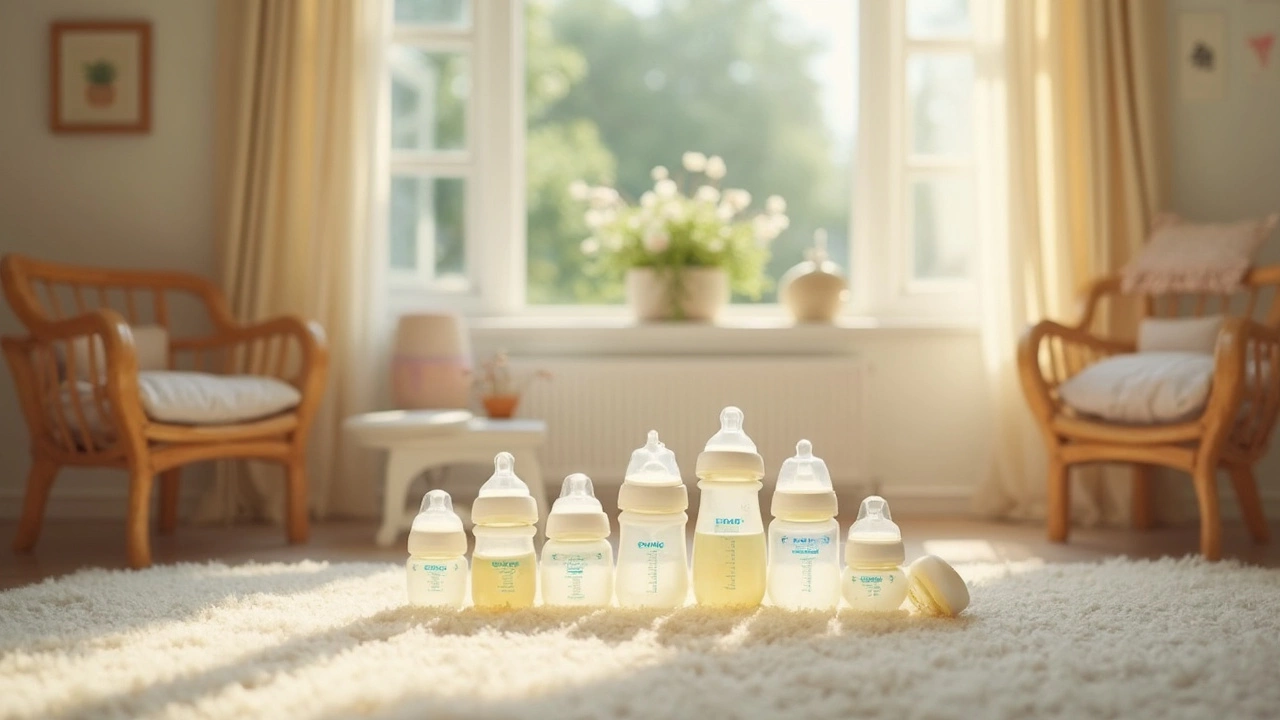
Choosing the right baby bottle feels like one of those overwhelming tasks, right? There are so many choices out there, and ensuring your baby's safety is top priority. Let's break it down to make this easier for you.
First things first, materials matter. The buzzword you often hear is 'BPA-free'. But what does BPA mean and why should we care? Bisphenol A (BPA) is a chemical used in manufacturing polycarbonate plastics. Many plastic bottles used to contain it, but fortunately, manufacturers have moved away from it because studies linked BPA exposure to health issues. So, check the label for 'BPA-free' to be on the safe side.
- Understanding Safe Materials
- BPA and Other Harsh Chemicals
- Glass vs. Plastic Bottles
- Practical Tips for Choosing Bottles
Understanding Safe Materials
When it comes to choosing a baby bottle, the material is everything. Not only does it impact safety, but it also affects durability and ease of cleaning. Let's dive into the options you have at your fingertips.
Plastic Bottles
Plastic bottles are super popular due to their lightness and unbreakable nature. However, choosing plastics requires caution. Always look for BPA-free labels. Besides BPA, check for other harmful chemicals like phthalates and PVC. Many of today's bottles are made from safer plastics like polypropylene or polyethersulfone.
Glass Bottles
Glass bottles have made a comeback and are often touted as one of the safest choices. Free from chemicals like BPA, they're easy to clean and sanitize. The downside is they can be heavy and breakable, though some come with silicone sleeves to minimize this risk.
Silicone Bottles
Silicone is a relatively newer material in the baby bottle market. It's soft, squishy, and highly durable. Plus, silicone bottles are free from potentially harmful chemicals, making them a safe bet. The flexibility can make cleaning tricky, but it's a worthy trade-off for the peace of mind they offer.
| Material | Safety Level | Notes |
|---|---|---|
| Plastic | Medium | Check for BPA-free and other safe plastics |
| Glass | High | Heavy and can break, but chemical-free |
| Silicone | High | Soft, durable, and chemical-free |
Making a decision boils down to balancing safety with convenience. Whether you choose sturdy glass, chemical-free silicone, or lightweight plastic, the most crucial step is ensuring it's free from harmful chemicals. That's how you keep your little one safe during feeding time.
BPA and Other Harsh Chemicals
Okay, so here's the deal with BPA. It stands for Bisphenol A, and it was once a staple in most plastic products, including baby bottles. It's known for its role in making a tough, transparent material. Sounds great, right? Wrong. Over time, scientists found that BPA can leach into food and drinks, potentially causing health issues, especially in infants and young children.
Due to health concerns, BPA was banned from many products in several countries. So, next time you pick up a baby bottle, look for the BPA-free label. That's your green light for peace of mind.
BPA's Lesser-Known Friends
BPA isn't the only chemical to watch out for. While manufacturers swiftly moved to replace it, some alternatives like BPS (Bisphenol S) or BPF (Bisphenol F) quietly took the stage. These, too, can pose risks. It's like dealing with a sneaky sibling trying to pull a fast one on you.
Watch for Phthalates
Phthalates are another group of chemicals found in some plastic bottles. They are often used to make plastics more flexible but can disrupt hormones if ingested. The good news is, many baby products today are labeled phthalate-free. Just like with BPA, it's crucial to scan labels.
- Look for bottles labeled as free from BPA, BPS, BPF.
- Check for 'phthalate-free' on labels.
- Preferably, opt for bottles that use safer plastics like polypropylene.
When it comes to safe choices, knowledge is power. By understanding what's in a bottle, you can make informed decisions that protect your baby, leaving you with one less thing to worry about in your parenting journey.
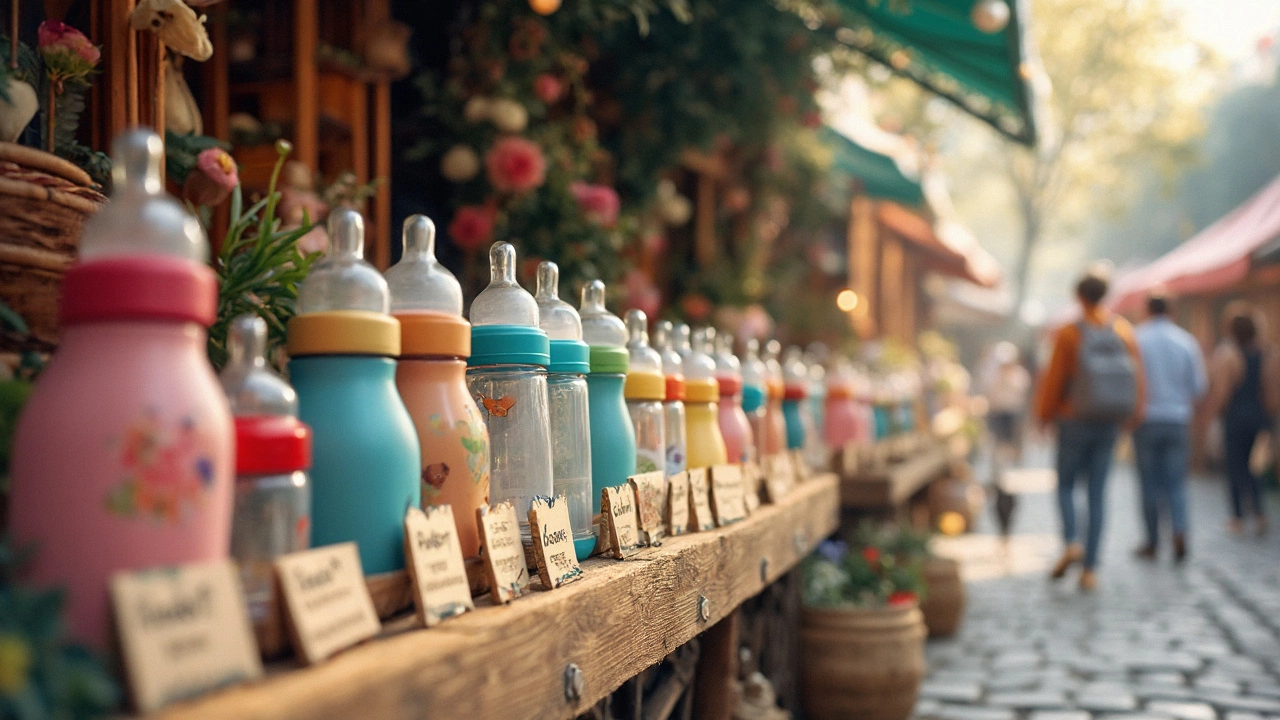
Glass vs. Plastic Bottles
When it comes to choosing between glass and plastic baby bottles, parents often wonder which is safer and more practical. Let's break down the pros and cons.
Glass Bottles
Many parents prefer glass bottles for their safety features. They are naturally non-toxic, meaning they don’t leach any chemicals into the milk or formula. Plus, glass is easily sterilized, making it a hygienic choice. A big downside? They can be a bit clunky and heavier for tiny hands to hold.
However, modern glass bottles often come with silicone sleeves to reduce breakage risk in case of falls. They're also great for maintaining temperature, so if you're dealing with a fussy baby who needs their milk at the perfect warmth, glass might be the way to go.
Plastic Bottles
Plastic baby bottles, on the other hand, are lightweight and shatter-proof, making them a practical choice for on-the-go families. They’re often less expensive and easier for babies to hold by themselves. The key here is to choose bottles labeled as BPA-free, ensuring they don’t contain any harmful chemicals.
The downside? Over time, plastic might retain odors or stains and can degrade with sterilization. However, with careful maintenance and regular checks, this shouldn't be a deal-breaker for most parents.
Quick Comparison
| Factor | Glass Bottles | Plastic Bottles |
|---|---|---|
| Durability | Breakable but durable | Shatter-proof |
| Weight | Heavier | Lightweight |
| Safety | Non-toxic | Ensure BPA-free |
The decision ultimately boils down to lifestyle and preferences. If breaking a bottle is a concern, perhaps plastic with its durable nature is better. If chemical exposure worries you, then glass might be worth the weight. Whichever you choose, rest assured both have been adapted for modern needs and safety.
Practical Tips for Choosing Bottles
Alright, you're standing in front of a sea of baby bottles and wondering, 'Which one is the right choice?' Let's simplify this. Here are some practical tips to guide you:
Consider the Material
When it comes to materials, the big players are glass and plastic. Glass bottles are great because they're free from chemicals, are easier to clean, and they don't absorb odors or colors from milk. However, they can be a bit heavy and breakable. Plastic bottles are lightweight and durable but always ensure they're labeled as BPA-free. If you want to go green, look into stainless steel options – they're durable and free of any nasties too.
Nipple Types
Surprisingly, choosing the right nipple is a big deal. Nipples come in all sorts of shapes and flows. Opt for a nipple flow that matches your baby's age — slower for newborns and faster for older babies. Some babies are picky too, so be prepared for a little trial and error. Silicone nipples are a popular choice because they're sturdy and long-lasting.
Ease of Cleaning
We get it – cleaning is no one's favorite task. Pick bottles with wide mouths; these are easier to clean and also make it simpler to pour formula or breast milk without spills. Consider whether the bottles are dishwasher safe for hassle-free cleaning.
Shape and Design
Some bottles are ergonomically designed to help little hands grasp them as your baby grows. Anti-colic designs (yep, those with vents) can help reduce gas and spit-ups. These can make a huge difference if you have a fussy eater.
Pro Tip: Keep a Few Options
Sometimes, the best laid plans go astray. Your baby might reject a bottle you've invested in, so it helps to have a few types on hand. This way, you’re ready for when they decide what they prefer.
| Factor | Recommendation |
|---|---|
| Material | Glass or BPA-free plastic |
| Nipple Flow | Match to baby age |
| Cleaning Ease | Wide mouth, dishwasher safe |
| Design | Anti-colic vents |


